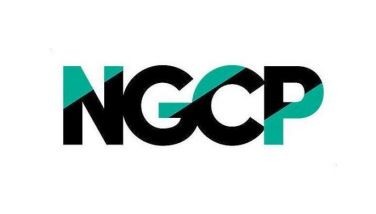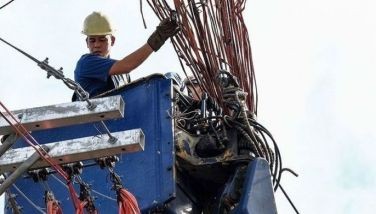Tax holidays to attract new investments

The Investment Priorities Plan for 2011 is off the press, so to speak, and is now up for approval in the Cabinet.
The priority projects include Agriculture, Ship Building, Low Cost Housing, Development of Indigenous Energy Sources, Infrastructure, Research & Development, Green Projects (in terms of manufacturing goods and efficient use of energy and natural resources), Tourism and Motor Vehicles. A special criterion has been included –this is Strategic Projects.
For the low-cost housing projects, the Board of Investment (BOI) lowered the cost per housing unit from P4 million to P2.5 million, only for purposes of qualifying under the BOI incentives scheme. For tourism projects, the BOI has considered projects which are otherwise not covered by the Tourism Development Act, which supported only tourism-related projects located in tourism zones. Now the agency is coordinating closely with the Department of Tourism (DOT) to identify worthy projects outside of the tourism zone, so this should be good news for developers who wish to qualify under the BOI laws.
Of course, motor vehicle development is a high priority in the 2011 IPP, and it’s high time we gave the auto industry this much-needed boost. I was in Thailand about a week ago for the all-new Ford Ranger launch and also for the Bangkok Motor Show. Much as I enjoyed the hospitality of my host, Ford Group Philippines, enjoyed Thai cuisine and their shopping, and found the Thais a very friendly people, I couldn’t help but feel pangs of regret that we have not achieved as much as the persevering and hardworking Thai people have in terms of the automobile industry. Thailand is now considered the hub as far as motor vehicle manufacturing is considered in the region, and for good reason. They are not plagued by excessive taxes, have no labor problems, and are not burdened by the high costs of doing business – permits and licenses, power costs, etc. The government has been very supportive of the auto industry and look where they are now.
For the motor vehicle criterion, the BOI is set to give incentives for parts and components locally fabricated as well as use of alternative sources of energy in the manufacture of these. What are these incentives?
The Executive Order (EO) that is still in effect grants zero duty on all importation of capital equipment for projects listed in the IPP. Sadly, this EO ends in June 2011, but BOI, has been pushing for another Executive Order to extend the effectivity of the zero duty on capital equipment. A public hearing has been set through the efforts of the Tariff Commission, but the President has yet to sign the EO.
Another incentive is the Income Tax Holiday (ITH) for these BOI-approved projects under the IPP. The duration of the ITH would depend on whether the project is a pioneering effort or not. If it is, the project proponents can enjoy as much as 6 years holiday. If this pioneering project generates foreign exchange earnings, it earns a bonus of one year in the tax holiday. If the project’s direct labor to capital equipment ration will not exceed $10,000/work force, another one year bonus is earned in the ITH. Further, if the project makes use of indigenous raw materials, about 50 percent or more, in the project, they stand to earn another year bonus in the ITH.
For non-pioneering projects, the Income Tax Holiday is good only for four years. In total, though, a project can only enjoy ITHs for not more than eight years.
This is covered by a Memorandum of Agreement between the BOI and the Bureau of Internal Revenue (BIR), so project proponents can run to the BOI if, while one’s project is still covered, you suddenly find a letter of authorization from the BIR in the mail informing you of an impending audit. The BOI promises to arm you with all the necessary documents to preempt the audit. The BOI will issue a certificate of ITH entitlement for all those qualified under their laws. However, BOI also reserves the right to validate the amounts claimed in the income tax returns of these projects and evaluate the full claims based on their own computations. The BOI annually forwards the list of companies/projects entitled to ITH based on a taxable year.
For 2011, the Board of Investments vows to be more strict and vigilant in granting income tax holidays, presumably because of some abusive companies who have used the BOI as a shield against the BIR. All companies/projects will be advised of the procedures they will have to comply with in order to avail of the ITH. Meanwhile, the BOI clarifies that a single company can have two or more projects listed with the BOi for purpose of availment of incentives. In 2009, for example, there were 844 projects listed, but only 699 companies. The year before that, 924 projects were approved, but only 780 companies were listed.
The BOI laments that some camps view these incentives as revenue foregone for the government. However, there is a fixed duration of these tax holidays, so after 4 to 8 years, these companies will have to pay their regular income taxes. Also, the projects are certain to generate employment for hundreds of thousands of our countrymen. For the 2011 IPP, BOI is targeting one million in employment. There is also the foreign exchange that will be generated by these projects (Note: export projects are automatically included, subject to procedures) and the country can certainly use the foreign exchange.
Incidentally, in the general classification of projects in the 2011 Annual Investment Priorities Plan listed above (which total nine), mining is glaringly absent. The BOI is still carefully mulling its inclusion in the list, especially with the increasing clamor from the anti-mining environmentalists.
What’s expensive for one’s health?
A fellow gun enthusiast, badminton colleague and friend, Sandy Daza, recently introduced us to the amazing benefits of Kangen water. Sandy has been living in Canada with his family and has recently relocated back to the country. While in Canada, he discovered this machine called Enagic, wholly made in Japan (the only one classified as a medical devise there), that transforms ordinary tap water into alkaline water and has been intrigued no end by what the machine can do for the body. His blood chem revealed high cholesterol levels which made him a candidate for lifetime maintenance medicine. A month into alkaline water, his doctor amazingly pronounced his cholesterol level as normal. He also personally talked of at least three diabetic friends who completely stopped taking insulin shots after they got initiated into Kangen water. This anti-oxidant neutralizes the acidity in the body, Sandy explains, and adds that cancer cells do not thrive in an alkaline environment. Kange water is thinner than the usual tap or bottled water that we take, and for this reason, it is more easily absorbed by our system.
Apparently, there are quite a few options available as far as the machine is concerned—from 3 plates upward, but Sandy recommends the 7 plates for optimum results. Patients undergoing dialysis are not advised to get the alkaline treatment, though.
For sure, the machine comes at a steep price, but as Sandy points out, is anything expensive for your family’s health? For more information on Kangen water, you may call 0919-661 4949 or google Sandy Daza and Kangen. You will be amazed at what you read.
Mabuhay!!! Be proud to be a Filipino.
For comments: (e-mail) [email protected]
- Latest
- Trending
























